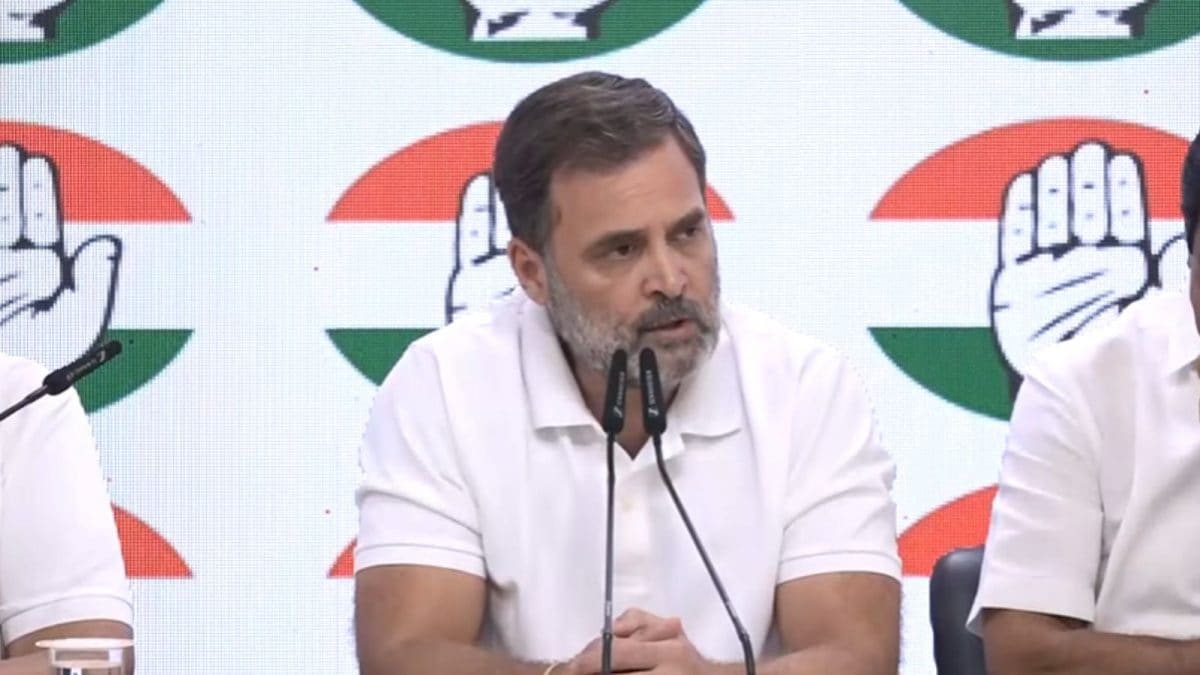No Dearth of Privatisation Critics but Govt Must Show Courage, Go Ahead with PSU Sale in 2022

Since 2011-12, the government has always missed the disinvestment target every year, except during 2017-18 and 2018-19. This fiscal is unlikely to be any different, as just about 5 per cent of the Rs 1.75-lakh crore target has been achieved. Quantitatively, 2021-22 doesn’t stand out in the history of disinvestment in India, but in qualitative terms, it will be remembered as the year when the privatisation process restarted after almost a couple of decades.
For Air India was privatised this fiscal. This will have a major effect on the sale of public sector undertakings (PSUs) in 2022-23. Just like the strategic sale of Balco in 2001, when the government sold its 51 per cent equity in the aluminium major, galvanised privatisation in the country, Air India sale has the potential of accelerating the pace of disinvestment.
Privatisation was practically banned in 2004 when the Left-supported and dominated United Progressive Alliance (UPA) came to power. Such is the intellectual hegemony of the Left and the influence of the deep pink state—the socialism-infected decision and policy makers in the system—that even after they parted ways with the Congress-led UPA, the aversion to privatisation persisted. So it took the government of Narendra Modi, generally regarded as pro-business, over seven years to sell a terminally sick PSU.
From Air India privatisation and other minority stake sales, the government has mopped up Rs 9,240 crore, according to the Department of Investment and Public Asset Management (DIPAM). If the shortfall is not abridged in the next three months, it will adversely impact the fiscal deficit target—pegged at 6.8 per cent of the gross domestic product or GDP for the current fiscal. In 2020-21, the fiscal deficit was 9.5 per cent, primarily because of the mayhem and lockdowns induced by the coronavirus.
The government sold its entire equity in Air India to the Tata Group in October for Rs 18,000 crore. Of this, however, only Rs 2,700 crore will accrue to the public exchequer, the rest will go in repaying the erstwhile PSU’s debt.
The government had planned various kinds of major disinvestment for this fiscal, including initial public offering (IPO) of the largest insurer Life Insurance Corporation (LIC), and privatisation of IDBI Bank Ltd, oil refining and marketing major Bharat Petroleum Corporation (BPCL), and helicopter services operator Pawan Hans Ltd.
The biggest disinvestment, if and when it happens, will be the LIC IPO. The insurer is expected to be valued anywhere between Rs 8 lakh crore to Rs 10 lakh crore, so if the government offloads even 10 per cent, it can garner anywhere between Rs 80,000 crore to Rs 100,000 crore.
Actual valuation is, however, taking a lot of time. This is the reason that, according to a PTI report, the IPO is unlikely happen till March 31, 2022. The report said, “There are still some issues that need to be addressed with regard to the valuation of LIC, a senior official of one of the merchant bankers said. Even after the valuation, there are several regulatory processes that have concluded, the official said.”
The IPO will be vetted by the Securities and Exchange Board of India (SEBI) and the Insurance Regulatory and Development Authority of India (IRDAI). To make the matter worse, the latter has been without a chief for seven months.
It needs to be mentioned here that the sale of much smaller PSUs had occasioned controversies and court cases. For instance, the government had sold an ITDC hotel in Udaipur for Rs 7.5 crore in 2002; criminal cases were filed against then disinvestment minister Arun Shourie and others till 2020 on the ground that the sale resulted in a loss of Rs 244 crore to the exchequer. It was the Rajasthan High Court that came to Shourie’s relief.
In July, the Cabinet Committee on Economic Affairs had cleared the listing of LIC. Soon after, 10 merchant bankers were appointed. The government also amended the Life Insurance Corporation Act, 1956 for the purpose. The amendment stipulates that the government will have to hold at least 75 per cent in the insurer for the first five years after the IPO, and later at least 51 per cent.
BPCL is another big company on the block. The government holds around 54 per cent equity in the refiner-marketer whose market capitalisation is about Rs 87,000 crore. It wants to sell almost the entire stake. At the current value, the stake sale can get about Rs 45,000 crore. But the government can get more, for when the market knows that the character of a company is about to change, from public to private, it is willing to pay more.
“Expression of interests have been received (for BPCL),” the government said in Parliament on December 13. “The shortlisted bidders have been allowed to conduct due diligence. The timeline is dependent on successful outcome of different stages of transaction.”
It is unlikely, however, that BPCL could be privatised in 2021-22. Without LIC IPO and BPCL sale, it will not be possible to attain the disinvestment target.
In 2020-21 too, the government failed to get anywhere near the Budgetary estimate of Rs 2.1-lakh crore disinvestment target. It just garnered Rs 32,835 crore.
Yet, this fiscal is important for the simple reason that a major privatisation did happen—that of Air India. Though small in terms of the revenue it generated for the government, and much smaller than the proposed LIC IPO, it is more important in terms of a policy shift. The IPO and minority stake sales can enrich the exchequer, but they don’t signify government’s reduced intervention in the economy; privatisation does that.
Privatisation often lets a company realise its potential. Balco, for example, was valued at about Rs 1,100 crore in 2001 as a PSU. A couple of decades later, its net asset value is in the region of Rs 5,000 crore and profits at Rs 1,050 crore approx. If and when the government decides to offload its residual 49 per cent equity in the company, it can garner much more than Rs 551.5 crore it got in 2001 when it sold its 51 per stake to the Anil Agarwal-owned Sterlite.
Therefore, thanks to Air India privatisation, 2021-22 will be remembered as the year when the government made big progress in its disinvestment programme, even though it missed the Budgetary target. As is its wont, the government is likely to fix a high disinvestment target for 2022-23 too. If the government keeps its focus on privatisation, it would also succeed in achieving the target.
This, however, will not be easy, for there are still a lot of people, including within the saffron brotherhood, who are firmly opposed to the concept of privatisation. Public discourse is also not compatible with such bold liberalising policies. The government has to show considerable courage and tact going ahead on PSU sale.
The author is a freelance journalist. The views expressed in this article are those of the author and do not represent the stand of this publication.
Read all the Latest News, Breaking News and Coronavirus News here.
Source link






